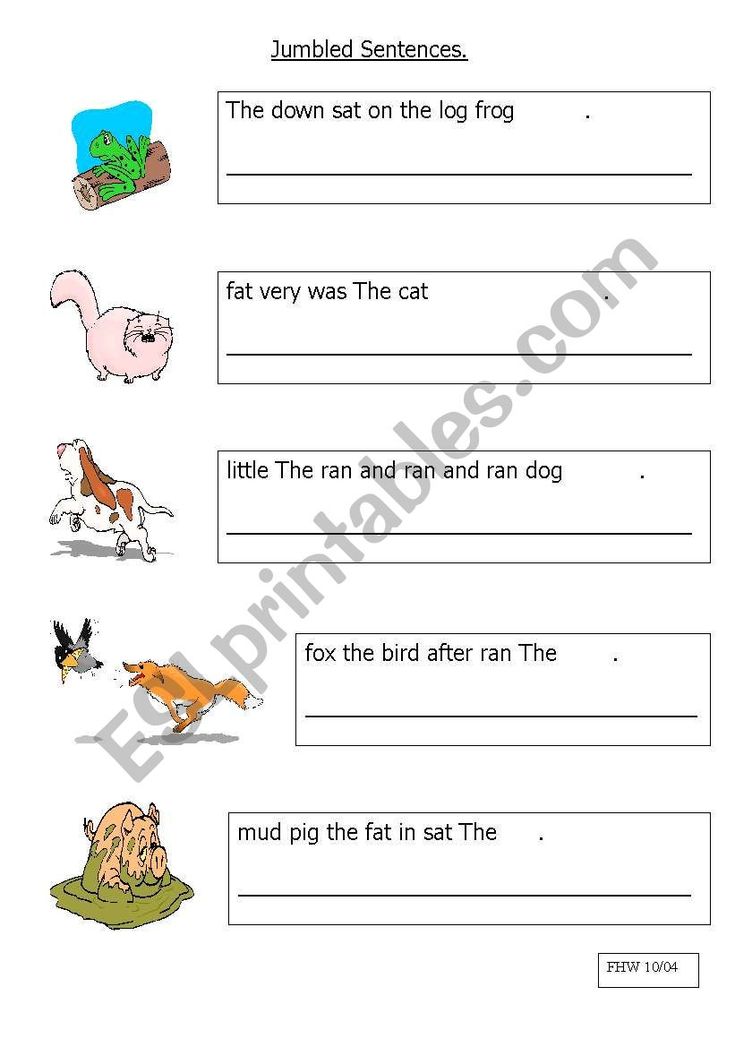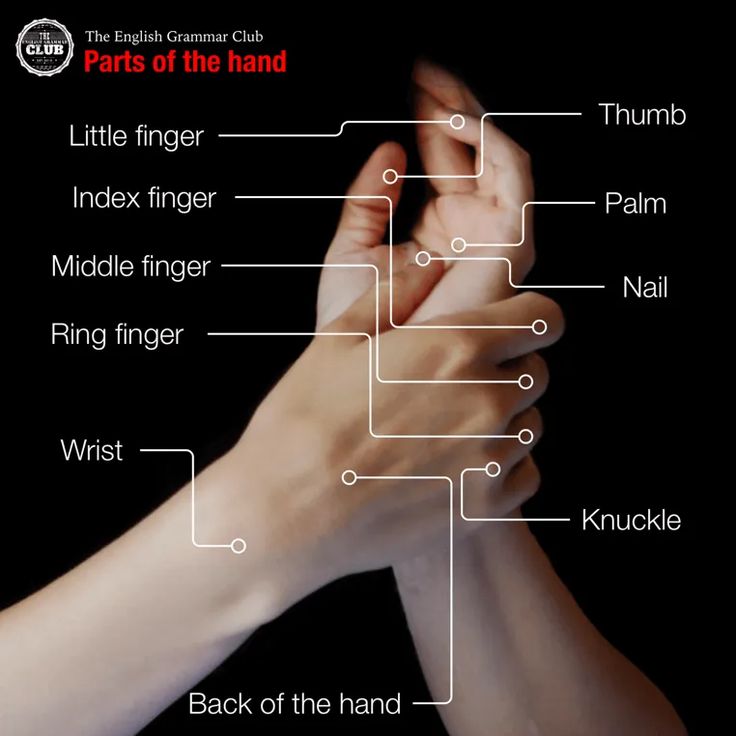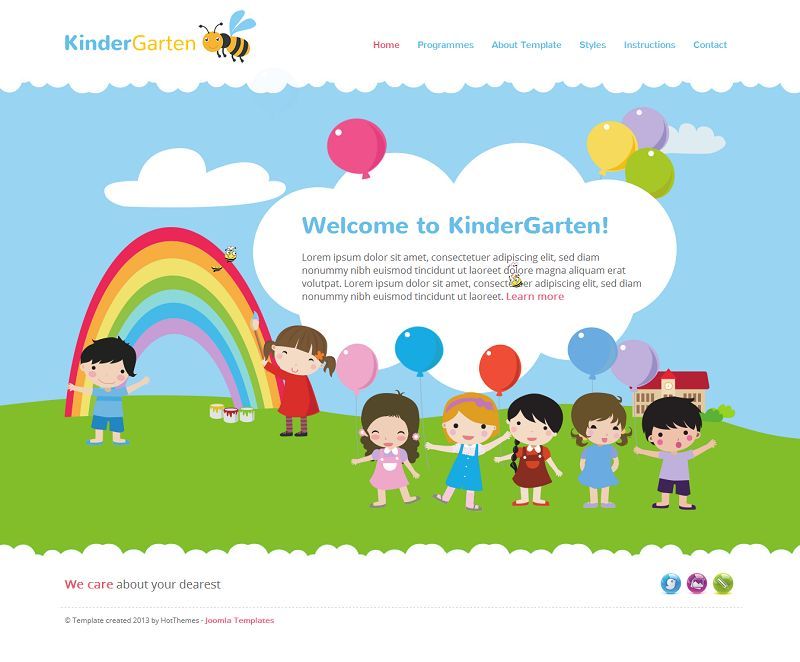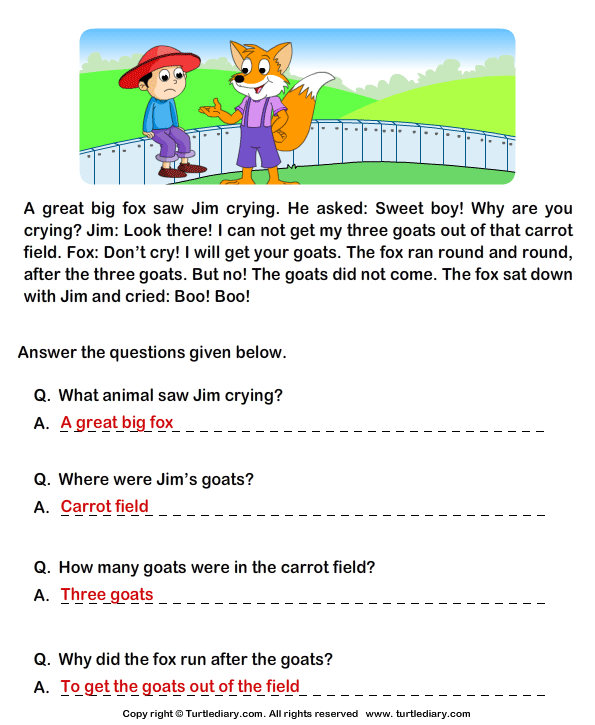Testing reading level
How to Test Reading Level Online: The Ultimate Guide
I decided to start hunting for a reading level test for my kid during my first year of homeschooling.
I had a first grader who had completed her phonics curriculum, but wasn’t really interested in chapter books. She loved for me to read to her, but was not interesting in reading very much herself – which stressed me.
As a frazzled, first-time homeschooler, I wanted to test her reading level to see if she needed more reading instruction, more practice, or if she was right where she needed to be.
I have tried a number of online reading tests over my homeschooling years and have found that they are not all created equally.
In this post I am going to share with you everything you wanted to know and more about giving your kid a reading level test.
But First, Avoid Reading Level Tests If…
Your kid is still going through a high quality phonics program, such as All About Reading, Explode the Code, or Primary Phonics.
Let your kid finish the program before worrying about what grade level they may be at.
Most reading tests do not assume that the child is learning phonics (since most kids aren’t) and will rely more heavily on sight words they think the child should have learned by a certain grade.
Taking a reading test with a kid who hasn’t finished their phonics reading curriculum is probably not going to be helpful to a parent or child.
Do Take a Reading Level Test If…
-
You have just started homeschooling and have no idea where your kid should be placed for reading.
-
You have finished a phonics program, but are still unsure if your kid is where they need to be.
-
You think your child might be gifted reader and want to see what level they are testing at.
-
You want to make sure your student is progressing, even though they’re not reading aloud to you anymore
-
You need to make sure you are buying the right level books for your child to read.

-
You want to see if your kid is smarter than someone else’s kid and you want proof.
These are all great reasons, well except for that last one. Definitely do not test your kid for homeschooling glory.
Hopefully that gave you a laugh, so let’s dive in!
4 Tips for Getting the Best Results When You Test Reading Level
1.Take the Reading Test Yourself
I took a lot of time to explain how the test runs below, but it would be helpful to run through the test yourself first. Make sure you know how to administer the test and confirm that the reading assessment is a good fit for your kid.
2. Administer the Reading Test at the Best Time
Make sure that your kid takes the test when they are their best. Is that first thing in the morning, in the evening, or right after lunch (probably not)?
Ensure your kid has plenty of energy, isn’t hungry, and is in a comfortable environment with minimal distractions.
3. Prep Your Kid Mentally
If you are giving a reading assessment to your kid, there is a good chance that your kid is already a little insecure about reading. Do not put the pressure on them that this test evaluating them.
I have given several reading tests and I make a point to tell them it is no big deal, but I do need them to do their best. I go on to say that I need to evaluate our curriculum. Depending on how they do on the test, I will make decisions about what books I need to buy for the next school year.
This takes the pressure off of them.
The are not being evaluated – the curriculum is being evaluated.
4. Do Not Share Their Results with Them
When the reading level test is complete, tell them they did well and that you are happy with their effort.
If the score is less than you were hoping for, you don’t want to destroy their confidence. If it’s really high, you don’t want them to be prideful and brag about it.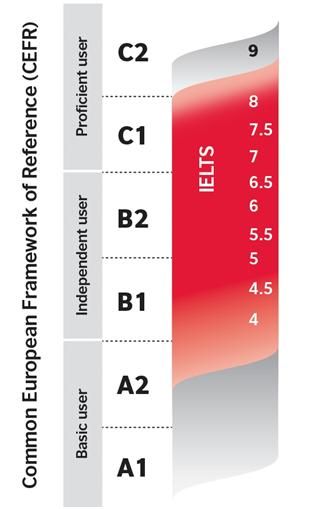
Either way, tell them they worked hard and you’ll use the scores to make the best decisions for their education.
This also helps if you plan to test their reading in the future. They will go into the assessment with no expectations – positive or negative.
3 Free Ways to Test Reading Level Online!
1. MacMillian Reading Level Test
The MacMillian Reading Level test seems to be one of the most popular and trusted reading level tests out there.
I used it with my daughter a couple years ago and I recently tested my own reading level to refresh myself on their process.
How the MacMillian Reading Level Test Works
Everyone starts at the easiest level. You are provided a picture and a fill-in the blank question. There will be 4 multiple choice options to choose from.
As you answer questions you progress through the levels until you have missed a certain number. Then you are immediately told what level reader you are – Starter, Beginner, Elementary, Pre-Intermediate, Intermediate, Upper-Intermediate, or Advanced.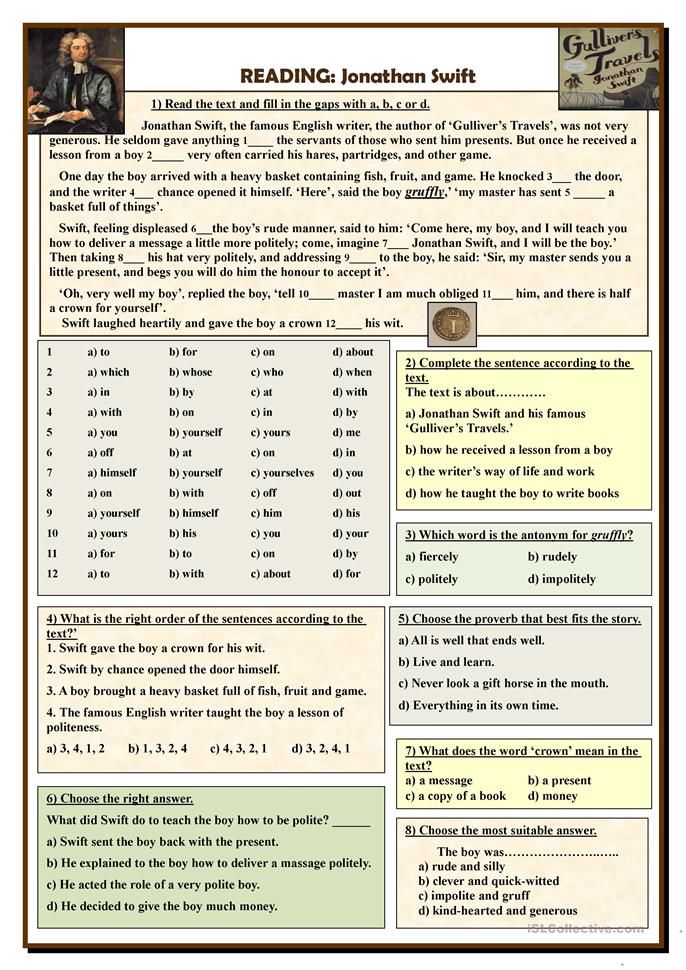
Interestingly, I found the questions to be a bit slanted towards an understanding of grammar and reading comprehension.
Here is an example of a grammar question. Your kid may be able to read all the words, but does he understand the correct verb agreement?
Pros and Cons of MacMillian Reading Level Test
The benefits of this online reading level test are that it is free, simple to use, and provides you an answer right away (no need to wait for an email).
It is also a great test for a kid who can read, but struggles with comprehension.
The negatives to me are that it seems to be testing more than reading and the results do not provide a grade level. You may not know what to do with an “Elementary Level” result. It is kind of a broad answer.
One More Thing to Know About MacMillian Reading Level Test
The test does not tell your child when they miss a question. I intentionally missed questions in order to see what would happen and it just went to the next question.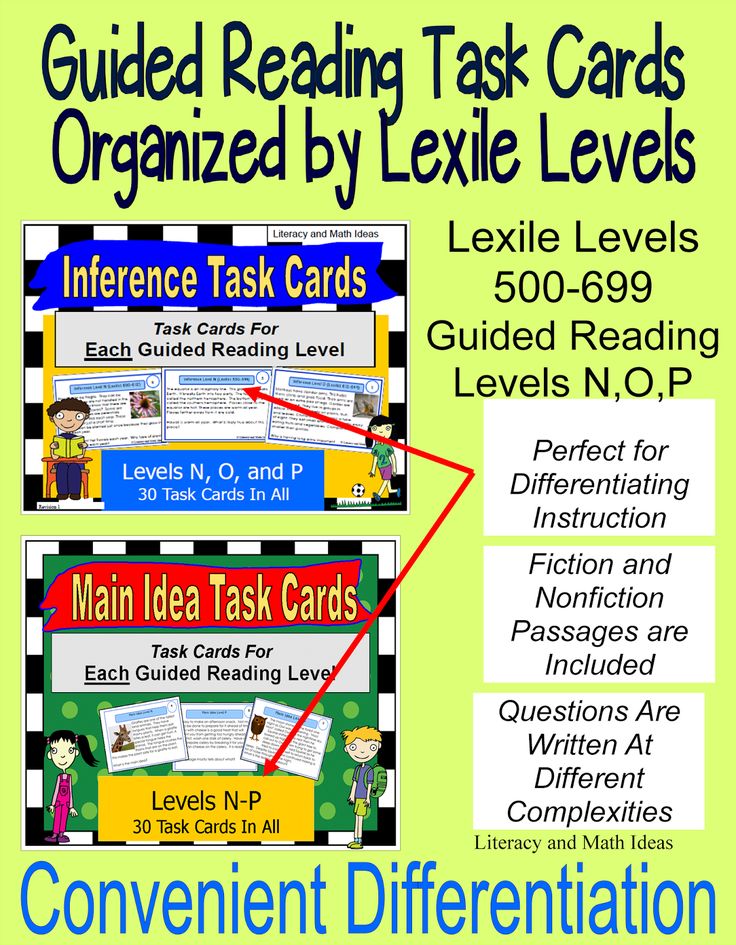
This might help if your kid would be stressed by a reading level test – no big red X when they make an error.
2. San Diego Quick Assessment
I have also used this reading level test with my kid – twice actually – and it lives up to its name!
It really is quick!
How the San Diego Quick Assessment Works
Go to this online PDF and print off the four pages.
You will see grade level words in columns from Pre-Primer through 11th grade. There are 10 words in each column.
Give your child the student portion and ask them to start reading down the first column. Use your grader sheet to check off if they read the word correctly or not.
The test helps you break down the results in terms of Independent Level, Instructional Level, and Frustration Level.
Pros and Cons of San Diego Quick Test
The benefits of this online reading level test is that it does give a quick and free snapshot of your kids reading level. No lengthy test that your child gets bored with.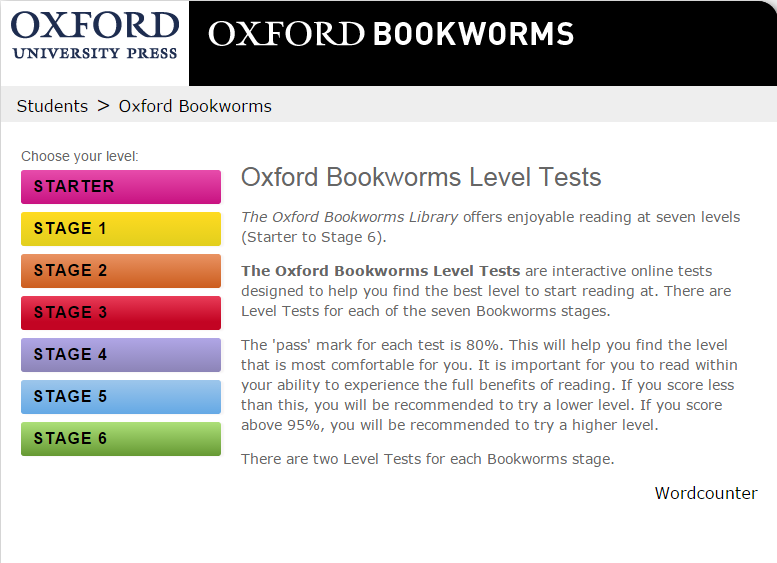
It is also on paper, which many kids do better with than reading off a screen.
The test doesn’t have any context or pictures to help your child. It will really tell you if they can read or sound out the word or not.
Parents will also like that they get a solid grade level result – a little easier to understand and work with.
The only con I have is that determining grade level with just 10 words is pretty arbitrary. You child may know many other grade level words, but not necessarily the ones on this list.
3. Pioneer Valley Reading Test
This is the most recent online reading level test we’ve used and by far my favorite. I found it to be much more comprehensive and I felt the results were a much more solid reflection of my daughter’s true reading skills.
How the Pioneer Valley Reading Test Works
This online reading assessment is broken into two parts.
Part One: High Frequency Word Reading
The first part consists of words coming across the screen for your child to read. The words are simple at first and then get more complex. The parent sits with the child and clicks “Correct” or “Incorrect” as the child reads each word.
The words are simple at first and then get more complex. The parent sits with the child and clicks “Correct” or “Incorrect” as the child reads each word.
Once the child misses two words, she is moves on to the next step.
Part Two: Reading
You will be asked to sit with your child while they read through an interesting story. Make a mark on a piece of a paper every time your child misses a word in the story.
At the end of the story you will be prompted to record the total number of words your child missed and whether or not they struggled to complete the story. Based on those results your child will either move forward or backward on a scale of A-Z. Eventually your child will be assigned a Letter Level and you will see a chart that corresponds to a grade level:
Pros and Cons of Pioneer Valley Online Reading Assessment
I thought this was much more involved and thorough than other tests we have tried.
Even if your child encounters words he doesn’t know in the first part of the assessment, there are still many other chances in part two to show their reading skills.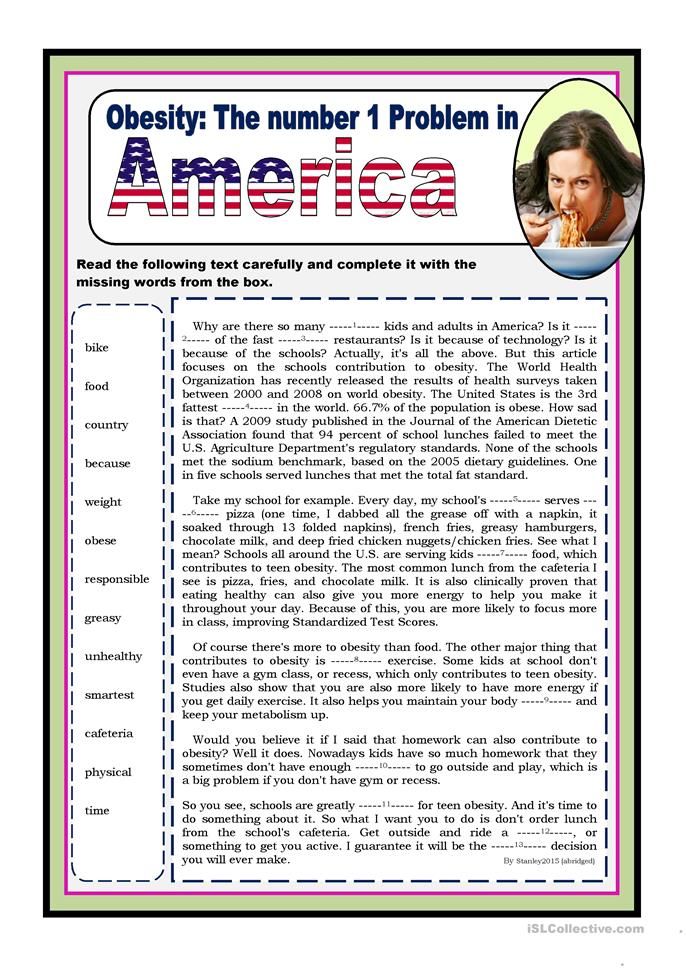
Other benefits include: it is free, the stories were interesting to read, and there was an option to test reading comprehension after each story.
Cons for me would be that the scale does not go beyond 6th grade. It just says 6 grade +. I would have liked to see a scale that goes into high school level.
Other Free Online Reading Level Tests to Try
There are many other resources to try out there to test your kid’s reading level!
Here are some other tests that might be the perfect fit for you and your kid:
Red Cat Level Reading Assessment
Oxford Owl Online Reading Test
Oxford English Reading Test
Good and the Beautiful Reading Level Assessment
Wide Range Reading Test
Not Happy with Your Kid’s Reading Level Test Results? Try these ideas!
1. Take a Different Reading Assessment
It is possible that the test you chose just didn’t jive with your kid. If you are unsure about the results, don’t be shy about waiting a day or two and then doing another reading test with your child.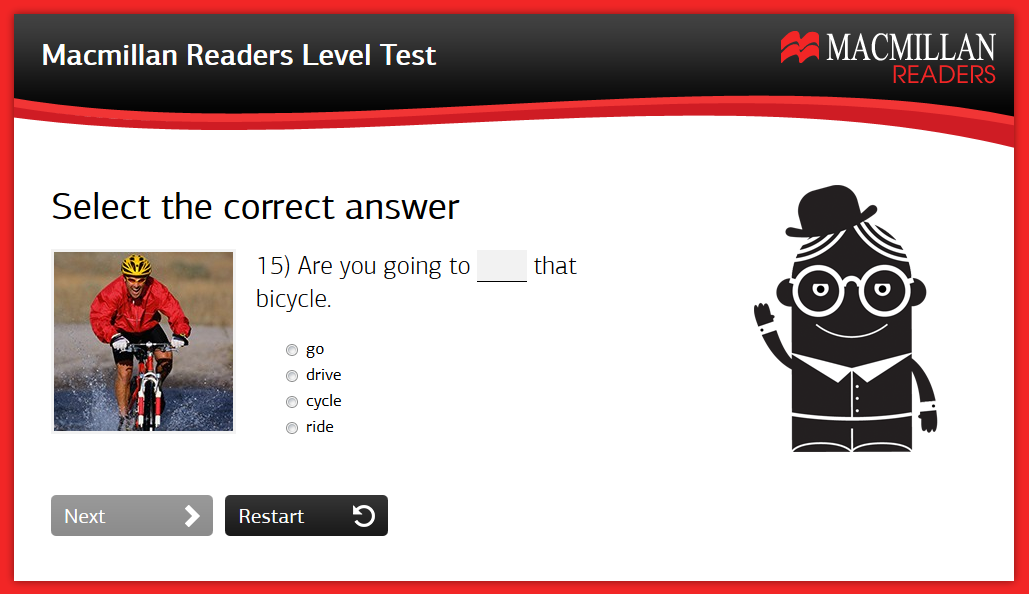
2. Think about what they struggled with the most during the the Reading Level Test
These reading level tests are excellent tools to help you pinpoint exactly where your child needs help.
Did your child struggle because of any of these issues:
-
Sounding out
When your child came to an unfamiliar word, did he freeze up, melt down, or give ridiculous guesses? If so, consider working with your kid on their phonics.
A high quality, low cost phonics program we love is Explode the Code. These simple workbooks are known for giving kids confidence and raising reading levels.
-
Vocabulary
Did your child manage to sound out a word, but have no idea what it meant? As your kid climbs the reading levels, increasing their vocabulary is crucial.
Some simple ways to increase vocabulary are reading aloud to your child regularly, using higher levels of vocabulary around the house, and including vocabulary curriculum in your homeschool.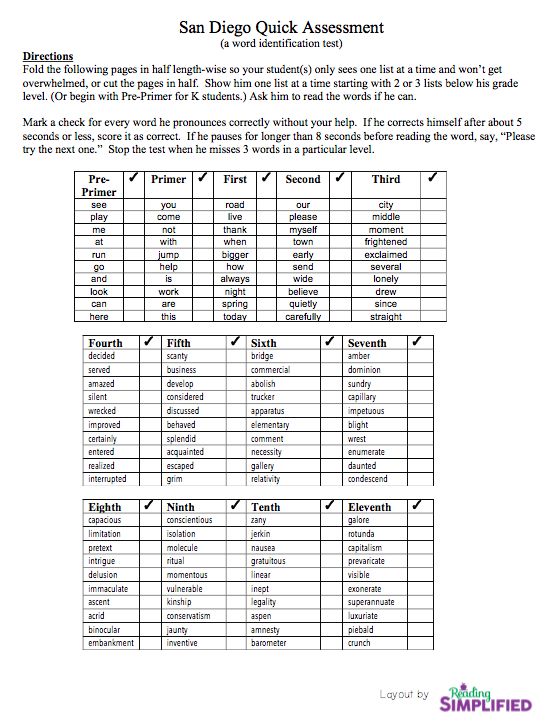
I recently bought Word Roots for my 4th grader and we are so excited about it. It teaches the Latin roots of English words so that kids can break down AND understand a large number of difficult words.
-
Comprehension
Is your kid reading beautifully, but has no earthly idea what he just read? Many parents would be jealous of the beautiful reading, but the comprehension is just as important – if not more so.
Providing your kids with a continuous flow of interesting books that spark their imagination will help a lot in this area. And I hate to say it, but decreasing their screen time will also dramatically help.
If your child continues to struggle with comprehension, consider looking into the Reading Detective series. We have added this workbook to our homeschool curriculum and I think it has really stretched my daughter. The workbooks teach children how to analyze a short story while answering multiple choice questions AND citing the paragraph or sentence number that proves their answer.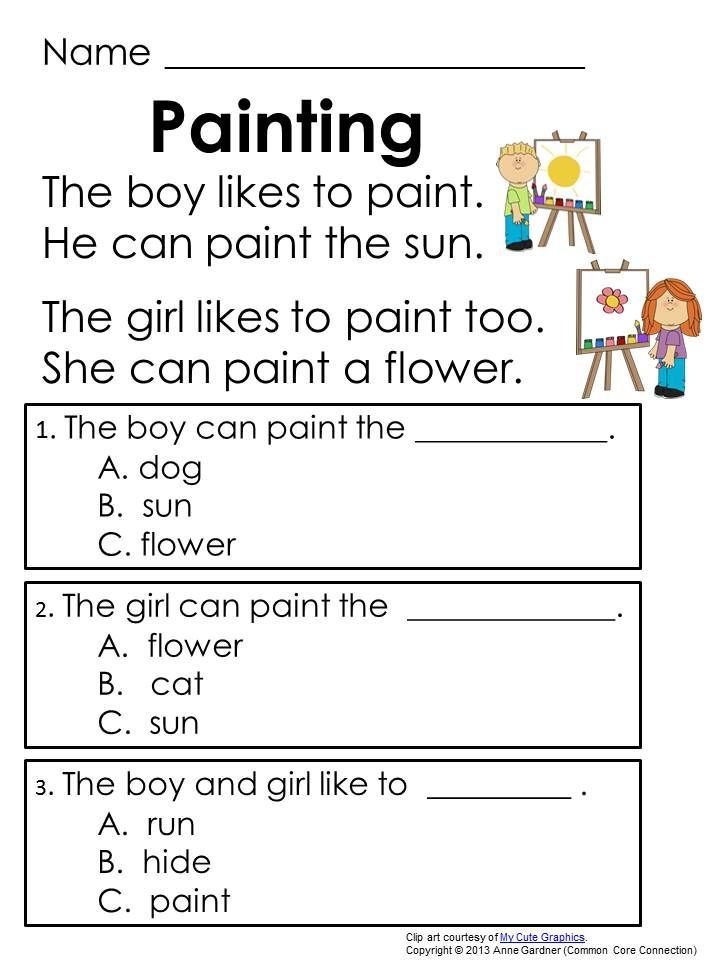
-
Fluency
Did your child painstakingly struggle through sounding out just about every word? Even the short vowel words?
The best thing for fluency is a high quality phonics program as mentioned before and practice, practice, practice.
I am a huge fan of easy phonics readers and keep multiple sets around the house. Here are some of our absolute favorites:
-
Bob Books
-
I Can Read It! Books
-
Primary Phonics Readers
-
Now I’m Reading! Books
-
Tug the Pup Books
-
Usbourne Phonics Readers
Recap Reading Level Test Guide for Kids
Remember above all else that a reading level test is a tool to help you customize your kid’s education and help them succeed.
It is not a grade for your parenting.
Or a grade for your homeschool.
You are not necessarily a failure or a success no matter how your child scores.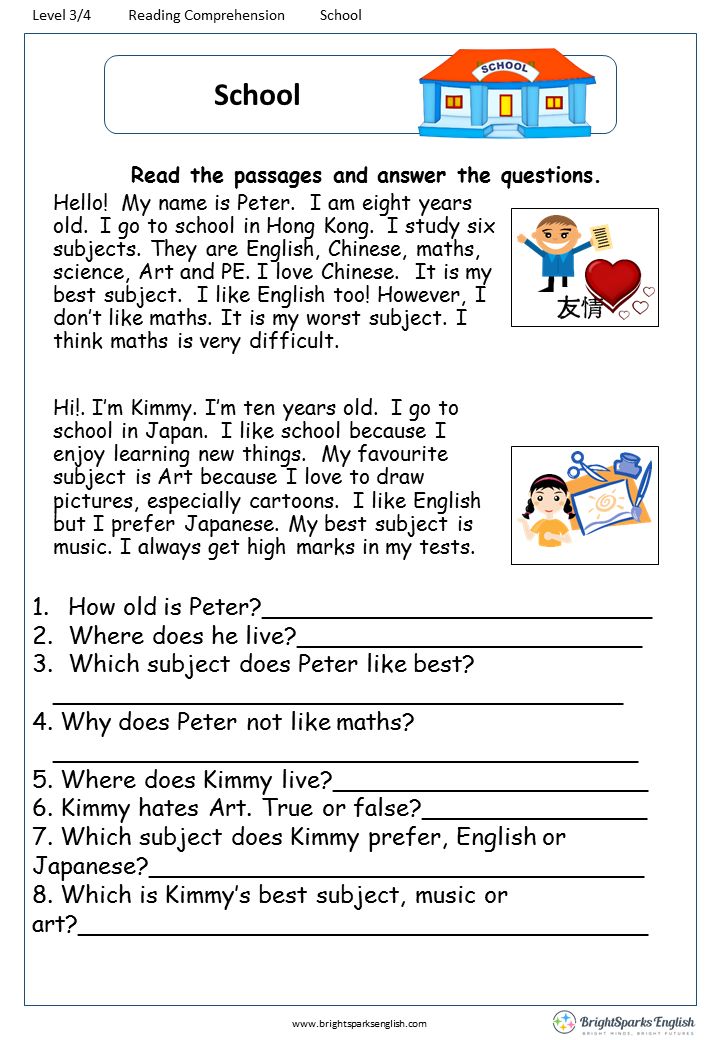
Use these free online reading tests to drive you forward and you can’t go wrong!
Have you tried an online reading test that isn’t mentioned here? Please share in the comments!
Do you want to make sure you save all this information for later – smart thinking! Just pin this article to your favorite Pinterest post and definitely share with your friends and followers!
Read Next:
Readability score | Readability test | Reading level calculator
Readability score | Readability test | Reading level calculator | ReadableYour readability toolkit
Powerful, flexible readability tools that work where you work.
Unrivalled Readability Scores
Find the most accurate scores for formulas such as Flesch-Kincaid and SMOG, as well as our own bespoke readability algorithm.
Read more about the scores that power Readable »
Actionable Insight
Readable is packed full of features you won't find anywhere else.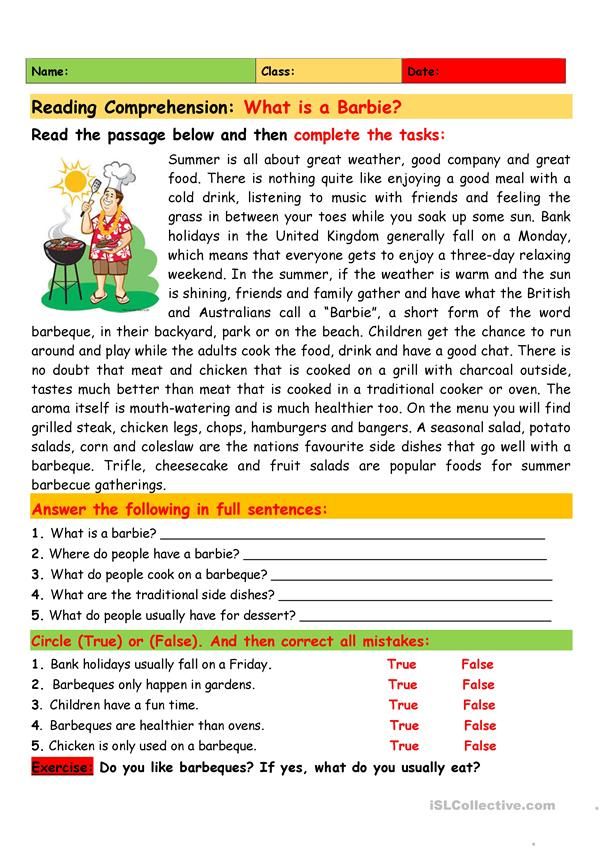 Hone your content for clarity and engagement to captivate your audience.
Hone your content for clarity and engagement to captivate your audience.
Find out more about Readable's writing style features »
For Everyone
Whoever your audience or whatever your medium, Readable's user-friendly editor is suitable for all kinds of writers.
Find out how Readable can work for you »
3,000+ authors, marketers, and educators trust us to delivery accurate readability analysis.
Discover the Power of Readability
Be understood
Grow your audience with clear, readable content.
85% of people can understand your content if it is a Readable grade A.
Clarity Features »
Make an impact
Attract new customers with crisp, dynamic content.
57% of customers are more likely to recommend you if they feel emotionally connected to your brand.
Impact Features »
Build loyalty
Retain customers with direct, trustworthy content.
Readability builds customer trust.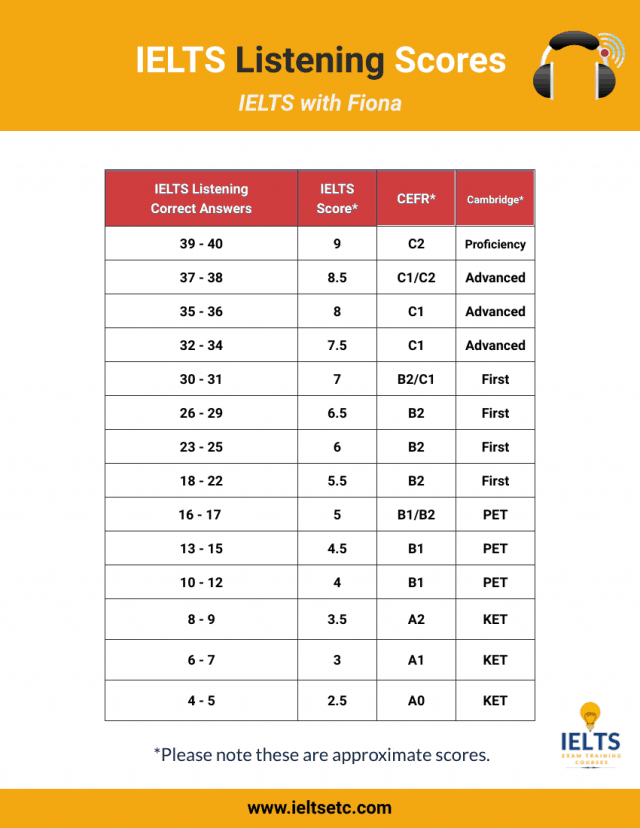 81% of consumers said trust is essential in a buying decision.
81% of consumers said trust is essential in a buying decision.
Audience Connection features »
Readability Tools
Document Readability
Improve your document readability and connect with your readers.
ContentPro helps you to produce clear, compelling content, helping you to engage with your audience.
Website Readability
Improve your website readability and lift conversions.
CommercePro is a suite of tools with a unique algorithm. The results give you actionable steps to optimise your website for readability.
Readability API
Integrate readability into your workflow and increase efficiency.
The Readability API on AgencyPro easily integrates into your website, CMS, product or service. Bring quality readability scores into your business.
What our happy customers say
Anna Bolton
Founder
Conversion Copy Co.
I use Readable to match my copy with my audience's reading level.
It's one of my top conversion optimization tools!
Candi Williams
Content Strategist
Nationwide Digital
Fact: good readability is good for everyone.
What Readable does is make it measurable. It makes readability tangible and gives the entire organisation something they can gather around.
Our promise to you
We are dedicated to providing the most comprehensive readability tools.
Accurate. Our scores are backed up by established readability algorithms and verified by over 10,000 automated tests and hand-calculated scores. You can be confident in your results.
Fresh. Our leading-edge readability checker is up to date with changes in standards. You can be sure your feedback is current and reflects real-world reading behaviour.
Here for you. We support your writing goals with our helpful resources and outstanding customer service.
Who's Readable for?
People and companies who want to make their content easy to read and understand.
Readable is used across all sectors and professions by people who value clarity and transparency in their business practice.
What is a readability score?
A readability score can tell you the level of education someone needs to easily read a piece of text. The score identifies a Grade Level relative to the number of years of education a person has. Read more about readability scores.
What is readability?
Readability is a measure of how easy a piece of text is to read. Read more about readability.
What is a good readability Score?
A Grade Level of 8 or lower is good for text aimed at the public. 85% of the public will be able to read and understand your content at Grade Level 8. Read more about readability scores.
Readability Formulas
The Readability Formulas that Power Readable
- Flesch-Kincaid
- Gunning Fog
- Coleman Liau
- SMOG
- Automated Readability Index
- FORCAST
- Powers Sumner Kearl
- Rix Readability
- Raygor Readability Graph
- Fry Readability Graph
- Flesch Reading Ease
- CEFR
- IELTS
- Spache
- Dale-Chall
- Lix Readability
- Lensear Write
Latest from the Blog
Content marketing
Improving E-A-T increases traffic.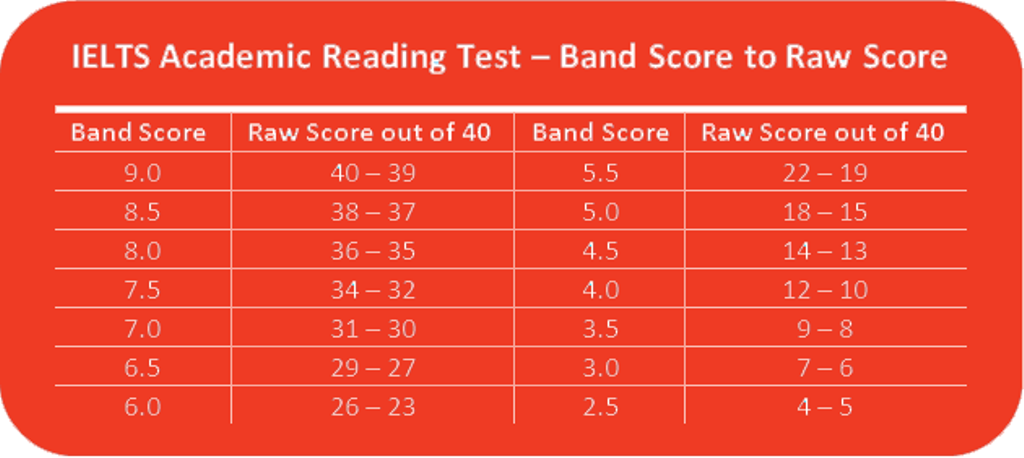 It also futureproofs websites for further Google Quality updates. What is your E-A-T and how can you use it for SEO?
It also futureproofs websites for further Google Quality updates. What is your E-A-T and how can you use it for SEO?
8 November 2022 by Laura Kelly
The joy of English
Reading can be very active if you make it so. Gather your post-it notes and let’s explore how we can read to become better writers.
21 October 2022 by Laura Kelly
Content marketing
In an ever-changing marketing landscape, one thing remains a constant reality. Words sell. Here's why writing is the most important marketing skill.
29 September 2022 by Laura Kelly
7 Days Free Readability Scoring
Try Readable for 7 days entirely free, or cancel any time if you don't love it.
Get Started Today
Read speed test.
 Online simulator for developing reading speed and awareness skills in 2021!
Online simulator for developing reading speed and awareness skills in 2021! Reading speed is an important indicator not only for schoolchildren, who regularly check it. It is very important for an adult in the modern world to be able to navigate in huge flows of information. A reading speed test will help you determine your current level and see if you need to work on improving this skill or if you are reading fluently enough.
Content
1. How to check reading speed?
2. How can I check my reading speed myself?
3. How to test a child's reading speed?
4. What reading speed is considered normal for adults and children?
5. How to choose the right text to test reading speed?
6. The book "Everything you wanted to know about speed reading, but were afraid to ask"
How to check reading speed?
The easiest way is to take a stopwatch (you can use the application on your phone), a text to check your reading speed and read it at a normal pace for one minute. It is important that the text is non-technical, does not contain highly specialized terms and concepts, and is not familiar to the reader. The text should not be too primitive. The testee must see the text for the first time so that the results are not artificially inflated.
It is important that the text is non-technical, does not contain highly specialized terms and concepts, and is not familiar to the reader. The text should not be too primitive. The testee must see the text for the first time so that the results are not artificially inflated.
But what do you care about speed, if you don't understand with what awareness you absorb the text? :)
A much better way to find out your reading speed is to take a free online test. To do this, sit back, enter your name in the form above, press the button and you will immediately see the text that you need to read, slowly, trying to understand everything that is written.
When the entire text is read - click on the button at the very bottom. The program will automatically determine the reading speed and prompt you to answer a few questions to understand the degree of assimilation of the material. As a result of testing, you will receive not only the result of your reading speed and awareness, but also recommendations for improving your reading technique in the format of the book "Everything you wanted to know about speed reading, but were afraid to ask.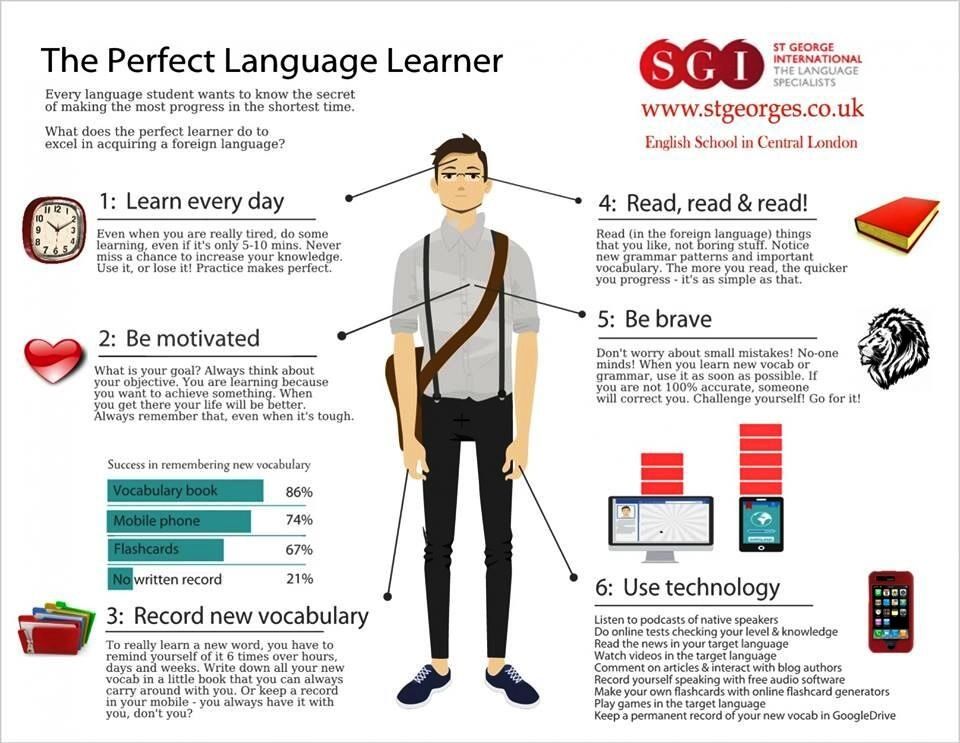 " Enter a name. Click the button and find out your real reading speed. Have a good day.
" Enter a name. Click the button and find out your real reading speed. Have a good day.
How can I test my reading speed myself?
We have prepared for you a tool with which you can independently check the speed of reading. Our tool include a certain amount of text that you need to read as quickly as possible. You will then have the opportunity to answer a series of questions about the text, allowing the program to determine your level of understanding. Based on the data received, a result and a certificate are issued. This certificate can be shared with your friends on social networks and challenge them to a battle to test the speed and awareness of reading :).
If you want to do it yourself, you can do it according to the following scenario. A text of medium complexity is taken, located on one sheet. You will need an assistant who will keep track of the time and will be able to test the level of your understanding of the information. Check algorithm:
Simultaneously with the start command and the start of the stopwatch, you begin to silently read the text.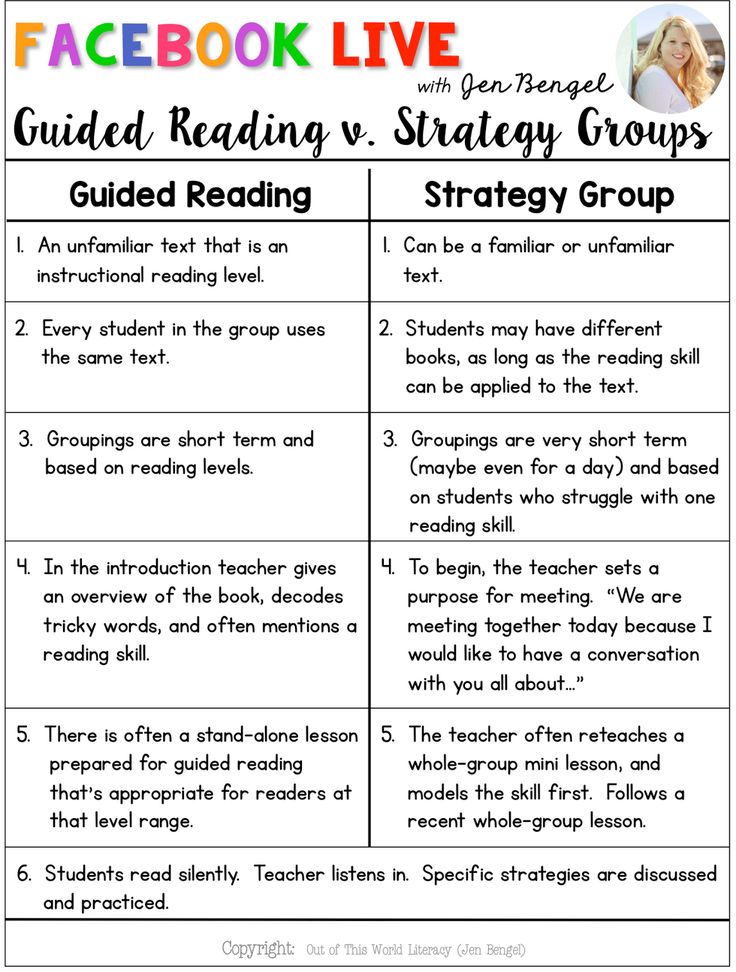
When the text is finished, you say stop - time stops.
Then you need to answer a few questions regarding the content (reading speed implies a full reading comprehension).
The last step is to count the words in the text and determine the average number of words per minute (words in the text can be counted before reading).
This is the certificate you can get based on the results of passing the test
How to check the reading speed of a child?
A child's reading speed can be tested in a similar way. The child should read aloud, at least in elementary school. Then you can switch to the usual way of checking for adults.
Schools often test reading skills by counting the number of words read per minute. This gives a small error, since words come in different sizes, but a similar verification method can also be used.
What reading speed is considered normal for adults and children?
The average reading speed for an adult is 200-230 words per minute.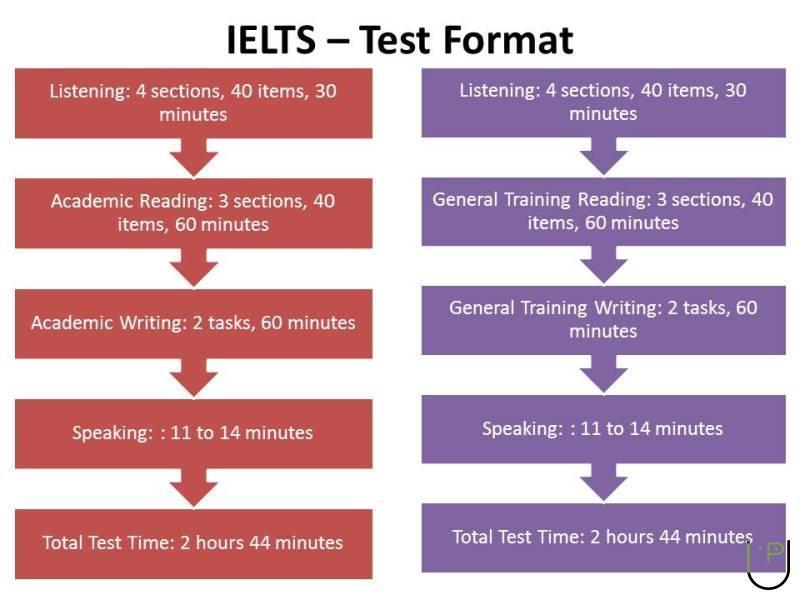 Below average, but an acceptable rate is 150-200 words per minute. Adults who read more than 230 words per minute are considered fast readers. For the speed reading technique, the optimal speed is 350-400 words per minute.
Below average, but an acceptable rate is 150-200 words per minute. Adults who read more than 230 words per minute are considered fast readers. For the speed reading technique, the optimal speed is 350-400 words per minute.
In children, the indicators are dynamic and change depending on age. Approximate norms used in elementary school:
20-30 words per minute for first grade;
45-60 words per minute for second grade;
70-85 words per minute for third grade;
90-125 words per minute for fourth grade.
How to choose the right text to test reading speed?
The criteria for selecting text to test reading speed are identical for adults and children. The only difference is the volume and complexity of the information. The text must match the following parameters:
medium difficulty appropriate for age;
the absence of specific unfamiliar words or their minimum number;
no dialogs;
location on one page;
large, comfortable to read font;
lack of pictures and other distracting elements.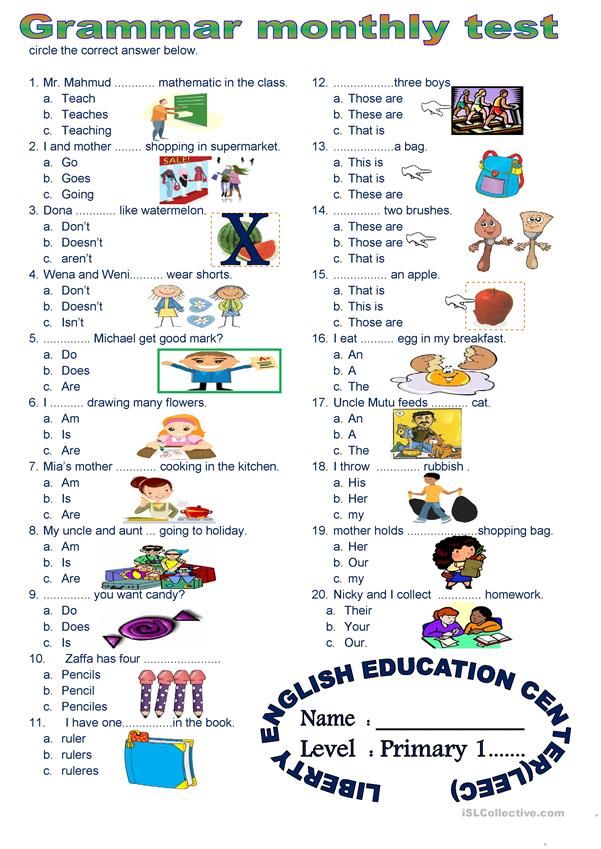
In our tool for testing reading speed and comprehension, we tried to take into account all these factors so that the resulting tool would be convenient for both adults and children. At the same time, he gave a fairly clear answer to the question about the real reading speed.
It should be remembered that reading speed is a variable parameter, which decreases if a person rarely sits down at a book, and increases with constant reading. There are many special techniques aimed at significantly increasing the speed of reading text information.
Everything you wanted to know about speed reading but were afraid to ask test. So don't waste a second,
go back to the very top of the page and go take the test!Reading speed test online is simple, convenient and fast
We have already written so much here about how to correctly measure your reading speed, achieve awareness and interpret the results, that every second of delay before you pass the online reading speed test and receive a personal certificate is just like death.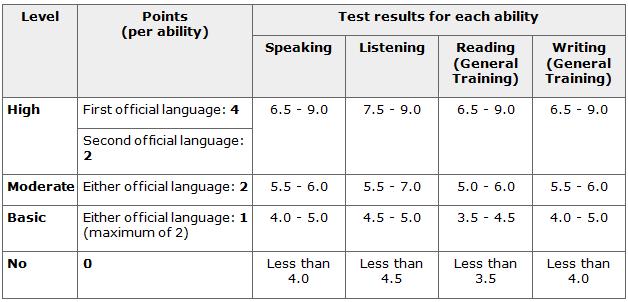 Return to the very beginning of the page, enter your name in the field under the video and go to the enchanting world of unfamiliar texts and tricky questions :).
Return to the very beginning of the page, enter your name in the field under the video and go to the enchanting world of unfamiliar texts and tricky questions :).
📖 Reading speed Q&A section
📕 What formula is used to calculate reading speed?
If it’s very short, then the formula for calculating the reading speed is as follows: V = (Q / T) x K. This formula allows you to get a real figure for reading speed with a correlation to the coefficient of meaningfulness. You can read more about the formula here in this article .
📗 What books do you recommend reading to develop speed reading?
We have compiled a list of the most useful books for the development of speed reading and posted it in a separate post on the blog. The list is constantly updated and gives an idea of the main books with which you can develop speed reading skills.
📘 What if I want to increase my reading speed?
You can start by learning the theory, or you can download our workbooks , which we have created especially for those who who wants to start learning speed reading. There are two of them: one notebook for adults, the second for children. Contains some theory and practical exercises designed for several weeks of regular classes.
📙 How to check a child's reading speed?
The reading speed test, which is located on our website, is suitable for both adults, as well as for children. We specifically tried to choose mostly literary texts that will be easy to read. to understand the child. Just go to the reading speed test page from the link above, enter child's name and start reading. Then the program will do everything for you.
📔 I want to check my reading speed online for free.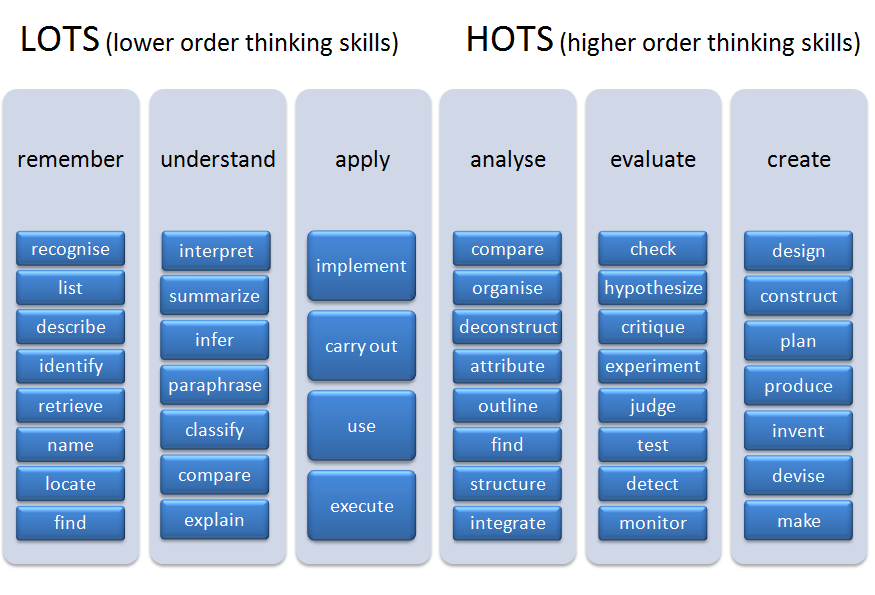 How to do it?
How to do it?
Easier nowhere. The tool, which is located at https://bukva.info/rapid/ , was created just for this. You just enter your name, read the text and answer the questions. The program monitors the speed of your reading and its meaningfulness. After answering the questions, you will receive a certificate with your result. The certificate can be shared with friends in social networks :).
📓 What is the "Read Fast" project?
Read Fast is a project dedicated to the problem of fast and conscious reading. We believe that you can read 3-4 times faster. However, the quality of memory reading material will only increase. Let's try together :).
standards for grades and quarters
Reading is a key skill that opens the gate to the land of knowledge for a child. Thanks to this skill, children learn about the phenomena and events of the world around them, get acquainted with the characters and actions of people, meet new problems and ideas.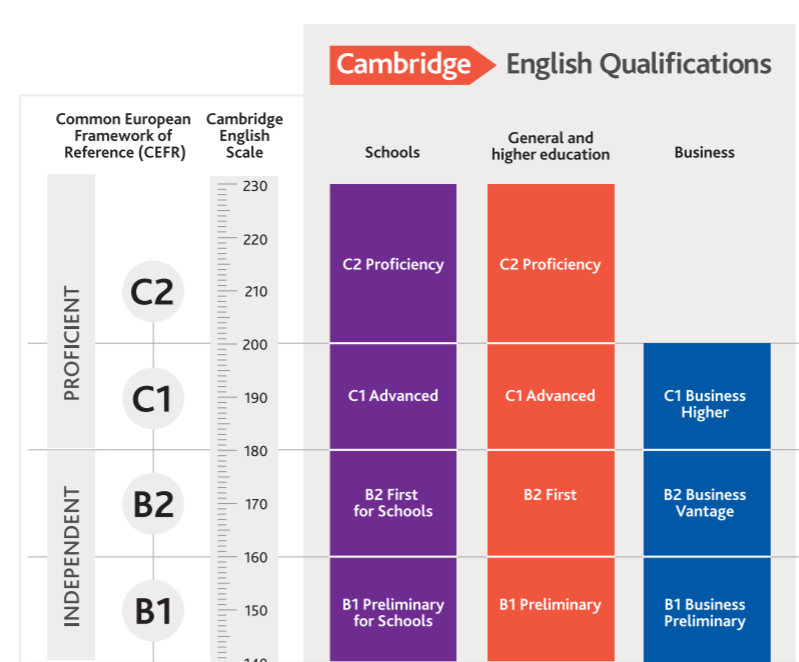 This skill helps them to broaden their horizons and ideas about the world, develops critical thinking and trains cognitive abilities - attention, imagination, memory. Reading is the foundation for further successful learning.
This skill helps them to broaden their horizons and ideas about the world, develops critical thinking and trains cognitive abilities - attention, imagination, memory. Reading is the foundation for further successful learning.
To understand how well a child develops this skill, it helps to check the reading technique. Reading technique is a multifactorial test that characterizes the development of a skill from different angles. In reading technique, the following are evaluated:
- reading speed,
- reading method,
- reading awareness,
- correct reading,
- expressiveness of reading.
A difficult reading skill consists of both a technical and a semantic component and is aimed at achieving the main goal - understanding and assimilation of the information read.
Reading technique parameters
Let's consider all the components of reading technique in more detail.
- Reading speed - the number of words read in a certain period of time.
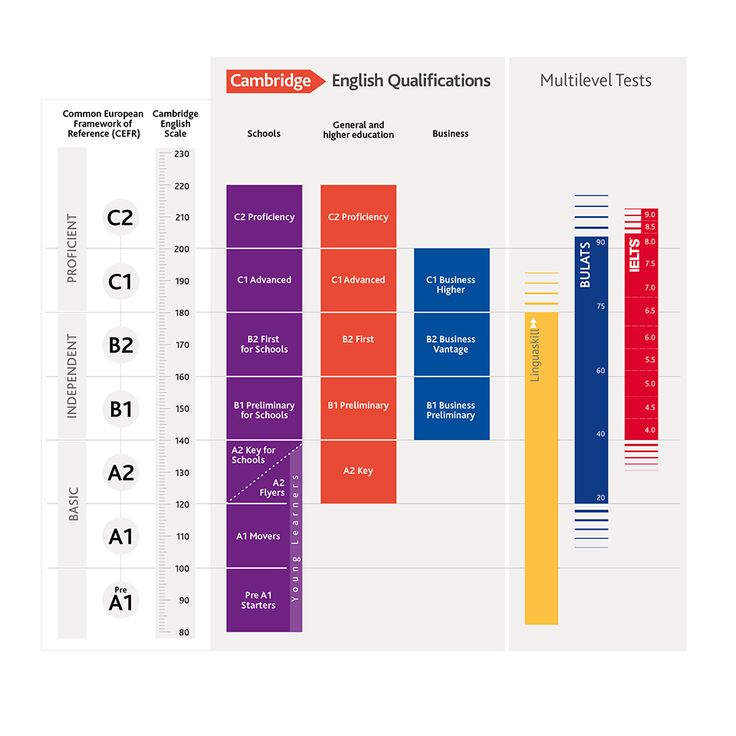 Often, parents focus on the formation of fluent reading, while the child makes many mistakes, does not understand and does not remember what he read. It is not necessary to force only speed, slower conscious reading and a gradual increase in tempo are better than fast mechanical reading with errors and inaccuracies.
Often, parents focus on the formation of fluent reading, while the child makes many mistakes, does not understand and does not remember what he read. It is not necessary to force only speed, slower conscious reading and a gradual increase in tempo are better than fast mechanical reading with errors and inaccuracies. - Way of reading — syllabic reading or reading the whole word, smoothly. With the development of the skill, the child has a gradual transition from syllabic reading to smooth reading in whole words.
- Correct reading is characterized by the absence of errors and hesitation. Inattention, problems of diction lead to inaccurate reading, indistinct articulation and, as a result, to a distortion of meaning. Pay attention to the correct reading - this will be the key to competent writing.
- Reading awareness involves reading comprehension, awareness of the idea and meaning of the text, and in the future - this is the ability to catch the subtext, humor, irony, the author's attitude.
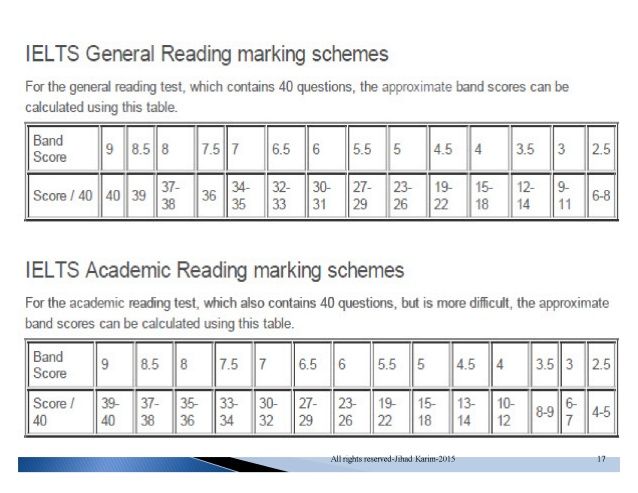 Interfering with reading comprehension can be low reading speed, distorted reproduction - guessing words, changing the shape of words, not reading endings.
Interfering with reading comprehension can be low reading speed, distorted reproduction - guessing words, changing the shape of words, not reading endings. - Reading expressiveness - the use of pauses, finding the right intonation, the correct placement of stresses. The expressiveness of reading is inextricably linked with awareness. When understanding what is read, it is easier for the child to observe the necessary pauses, select the correct intonation and place logical stresses.
Reading speed standards for elementary school
GEF standards determine the desired reading speed for a child by a certain point in learning, help to understand whether the development of a skill is successful or whether additional attention is required. Standards - indicative values; it is important to take into account the individual psychophysiological characteristics of each child and evaluate the growth of his personal indicators.
Grade 1 reading speed standards
Reading speed standards in grade 2
Reading speed standards in grade 3
Reading velocities in grade 40210 9000 9000
Reading speed, to which it is necessary schools, is reading at the speed of conversational speech, 110-120 words per minute.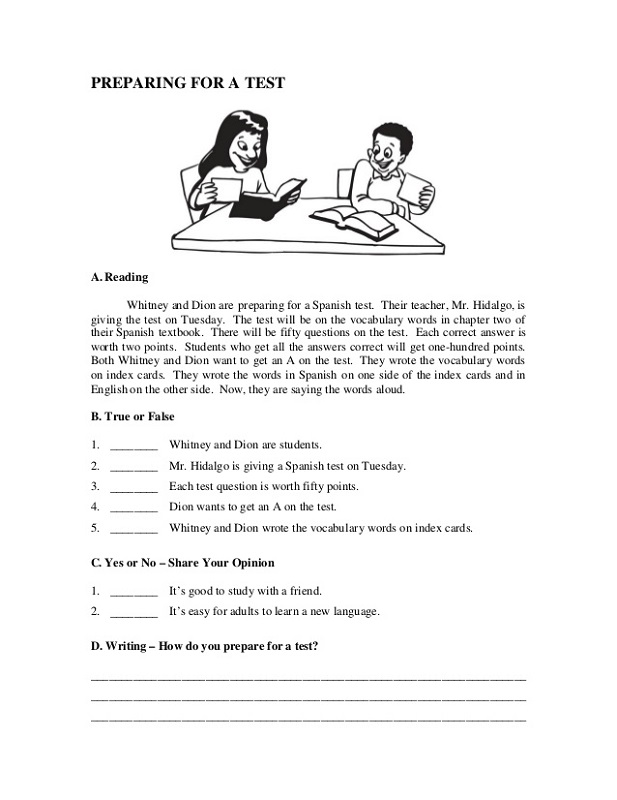 The human articulatory apparatus has adapted to this speed over time. And most importantly, the reading should be conscious, correct, expressive.
The human articulatory apparatus has adapted to this speed over time. And most importantly, the reading should be conscious, correct, expressive.
Other parameters of reading technique
Grade 1
At the end of the first half of the year. Reading is smooth syllabic, conscious and correct, with a clear pronunciation of syllables and words.
At the end of the second half of the year. Reading is conscious, correct, simple words are read as a word. Words with a complex syllabic structure can be read syllable by syllable.
Grade 2
At the end of the first half of the year. Reading consciously, correctly, in whole words. Compliance with logical stresses. Compound words can be read syllable by syllable.
At the end of the second half of the year. Reading meaningful, correct, in whole words. With observance of logical stresses, pauses and intonations. Syllabic reading is undesirable.
Grade 3
At the end of the first half of the year. Reading consciously, correctly, in whole words. With observance of pauses and intonations, with the help of which the child expresses an understanding of the meaning of what is being read.
At the end of the second half of the year. Reading consciously, correctly, in whole words. With observance of pauses and intonations, through which the child expresses understanding of the meaning of what is being read.
4th grade
At the end of the first half of the year. Reading consciously, correctly, in whole words. With the help of observed pauses and intonations, the child not only expresses an understanding of the meaning of what is being read, but is able to express his attitude to what he has read.
At the end of the second half of the year. Reading consciously, correctly, in whole words. With observance of pauses and intonations, through which the child expresses an understanding of the meaning of what is read, and his attitude to the content of what is read.
How can I test my child's reading skills on my own?
Have your child see how well they read already. Children usually love to know how many centimeters they have grown, and they may also be interested in knowing their progress in reading. Warn about the upcoming test and ask the child to read quickly.
The control of reading technique in sensitive children who, due to their temperament, can hardly tolerate various tests, can be carried out imperceptibly or in the form of a game. Do not create unnecessary excitement around the upcoming test, do not arrange a test in the form of an exam. If the child is worried, stutters, transfer control to another time.
Verification process:
- Prepare a clock with a second hand or use the stopwatch on your phone, and choose the appropriate text.
- Ask your child to take a seat.
- Show him the text and ask him to read it aloud.
- Track the time from the moment your child starts reading.
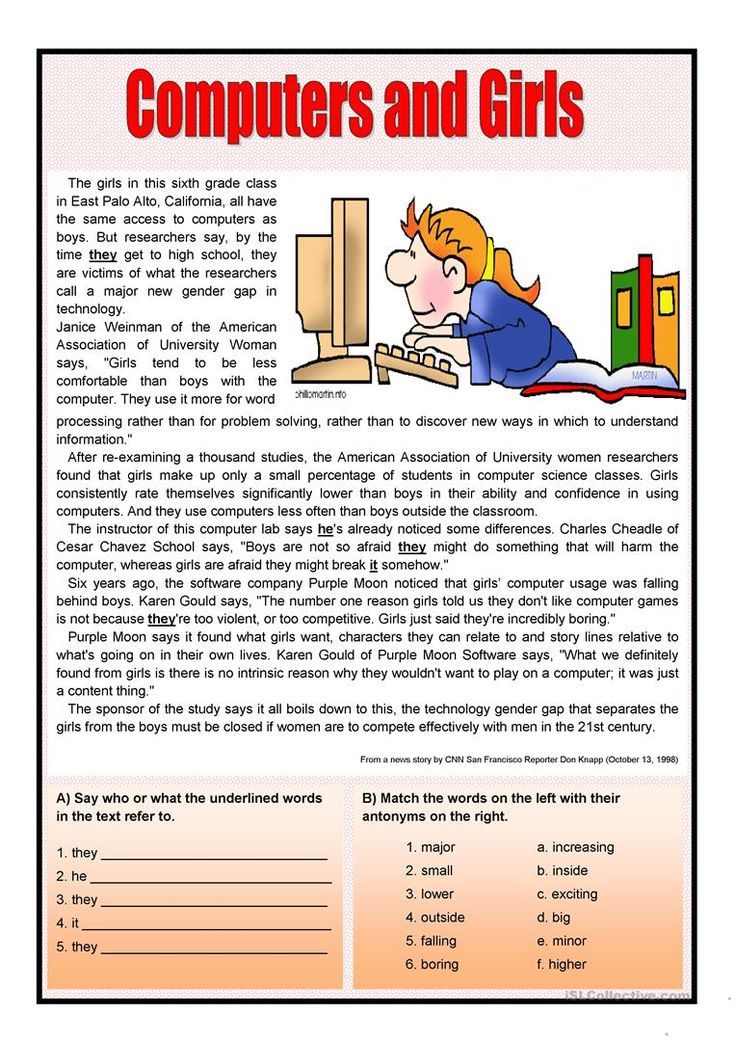 Not all children are able to immediately start reading on command, which leads to inaccurate results.
Not all children are able to immediately start reading on command, which leads to inaccurate results. - Usually, one minute is noted for checking, but some experts recommend taking 2 minutes for monitoring, since not all children are equally quickly included in the work. Divide the result obtained in 2 minutes in half.
- When reading, do not correct or interrupt. It is better to discuss the mistakes made after the child has finished reading.
- Evaluate the speed, correctness, awareness and expressiveness of reading.
- Retest and compare results. Reading technique may differ depending on the child's fatigue, health status and mood.
Which text is suitable for verification?
Both fiction and non-fiction texts appropriate for the child's age are suitable for this purpose. The text should be unfamiliar, but understandable to the child, have educational and educational value. The texts of V. Bianchi, L. Tolstoy, N. Nosov, B. Zhitkov, K.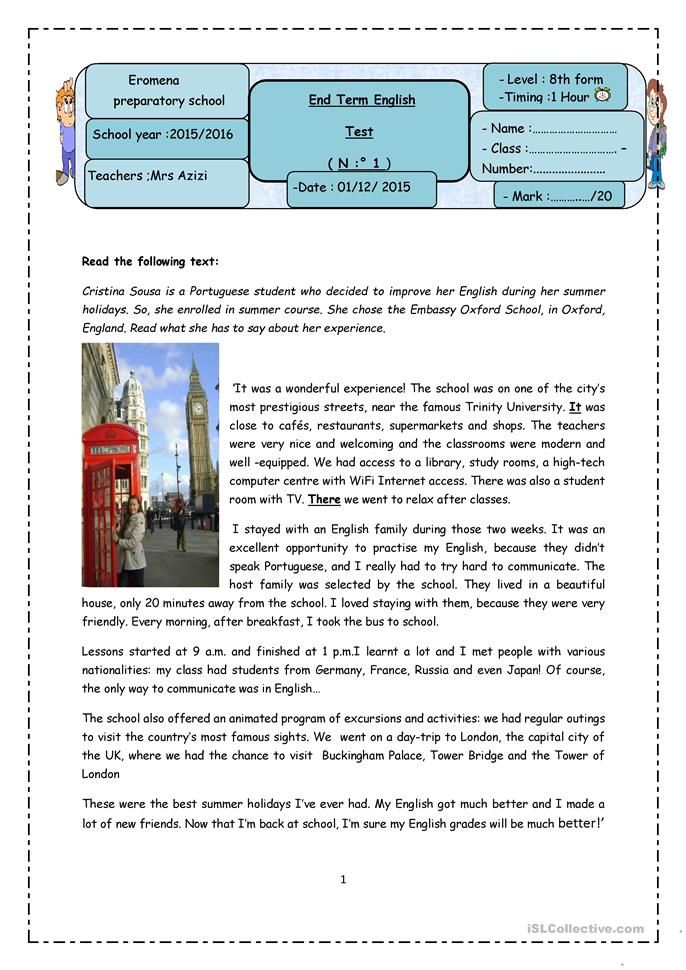 Ushinsky, V. Dragunsky are suitable. The text for verification can be found in special manuals or in a textbook on the Russian language and literature.
Ushinsky, V. Dragunsky are suitable. The text for verification can be found in special manuals or in a textbook on the Russian language and literature.
You should find the text that is located on the spread of the book so that the child does not have to waste time turning pages. Choose text without an abundance of punctuation marks and distracting illustrations. It is not desirable that the passage contains common complex sentences and dialogues. The font must be large enough and legible. The text should not have a technical focus and contain terms incomprehensible to the child.
Test score
Speed score
Count how many words the child read in one minute. When counting words, pay attention:
- prepositions, conjunctions, particles of 1-2 letters are counted as one word;
- when wrapping, a word counts as 2 words;
- if the word is written with a hyphen, look at how many letters are on both sides of the hyphen: if there are more than three, we count it as 2 words, for example, "long, long", if less than three, for example, "somehow", - as one .
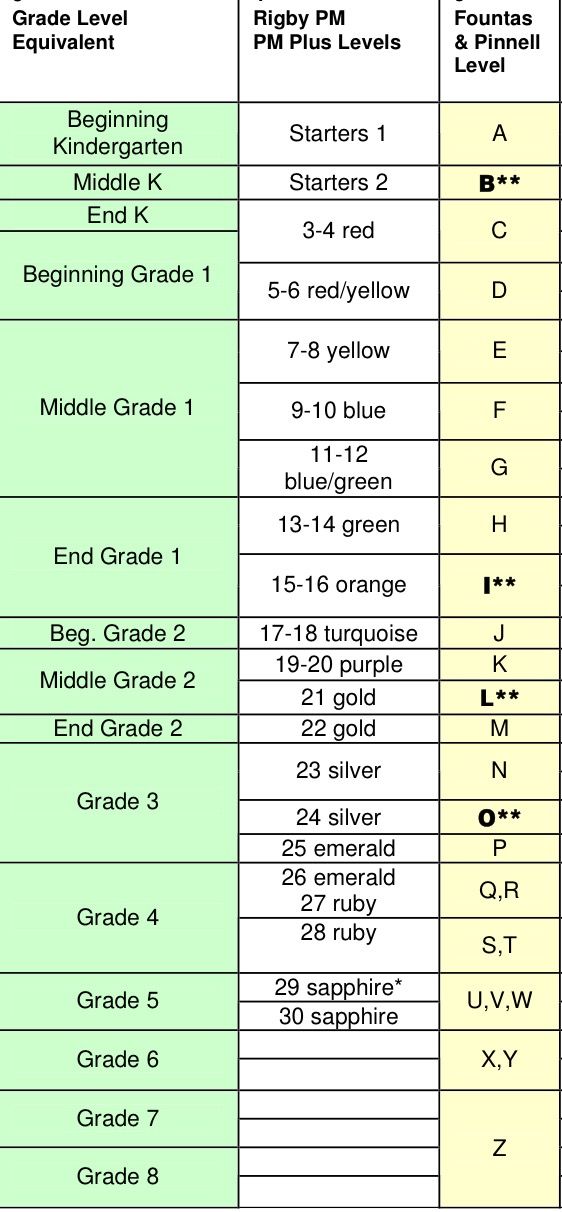
Compare your score with the recommended range and your child's previous performance.
Comprehension score
Determine how well the child understood what they read. If the student reads slowly and has read only a couple of sentences, let him read the passage to the end. Ask your child a few questions about the text. Ask what or who he read about. Ask the child to identify the main idea of what they read and retell the text.
For a deeper check of the meaning of the reading and learning, use special teaching kits.
Correctness assessment
Pay attention to whether the child reads what is written correctly, whether he pronounces words clearly, whether there are hesitations and corrections, whether he alters words, whether he changes endings, whether he places stresses correctly. Discuss the mistakes with the student.
Evaluation of expressiveness
To assess the expressiveness of reading, the child is offered a familiar text.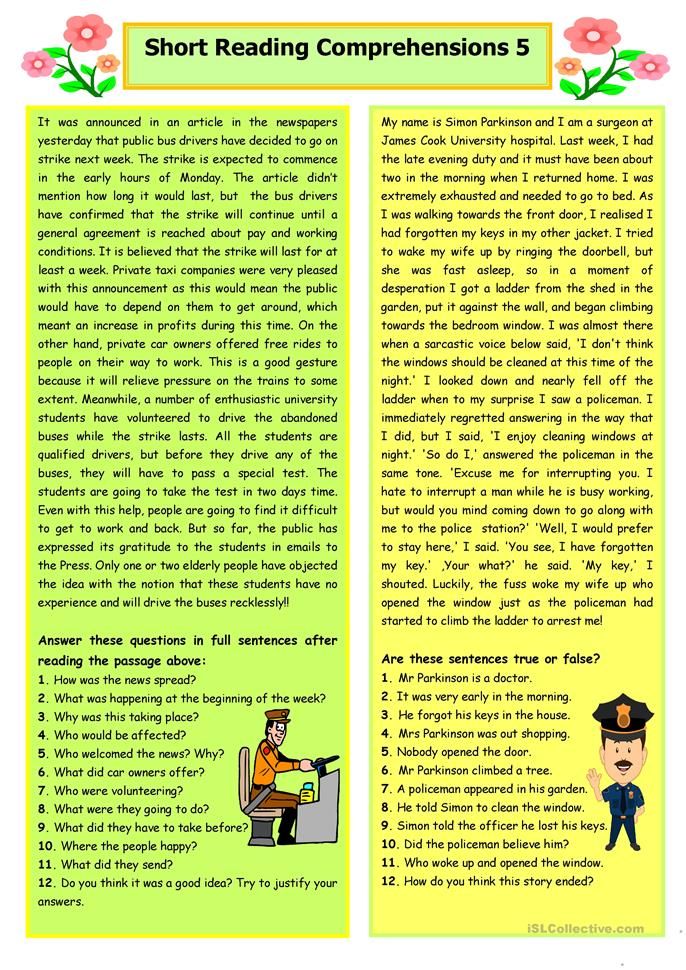 Listen to whether the child observes pauses and other punctuation marks, whether he changes intonation, whether he highlights the main idea.
Listen to whether the child observes pauses and other punctuation marks, whether he changes intonation, whether he highlights the main idea.
Improving reading technique
Poor results in reading technique are not a reason to be upset, but only a signal that additional efforts need to be made to improve the skill. You can work with the child on your own or contact a specialist who will analyze the weak points and select the appropriate exercises. Conduct additional activities with the child in the mode of "sparing reading" without pressure. It is more important to observe the regularity and frequency of classes: 10-20 minutes daily.
How can you motivate your child to read:
- Reward your efforts with stickers, stars.
- Mark progress visually - create a progress board so your child can visually see their progress
- Conduct activities in the form of a game, such as "going to the library" or "reading to your favorite toys.
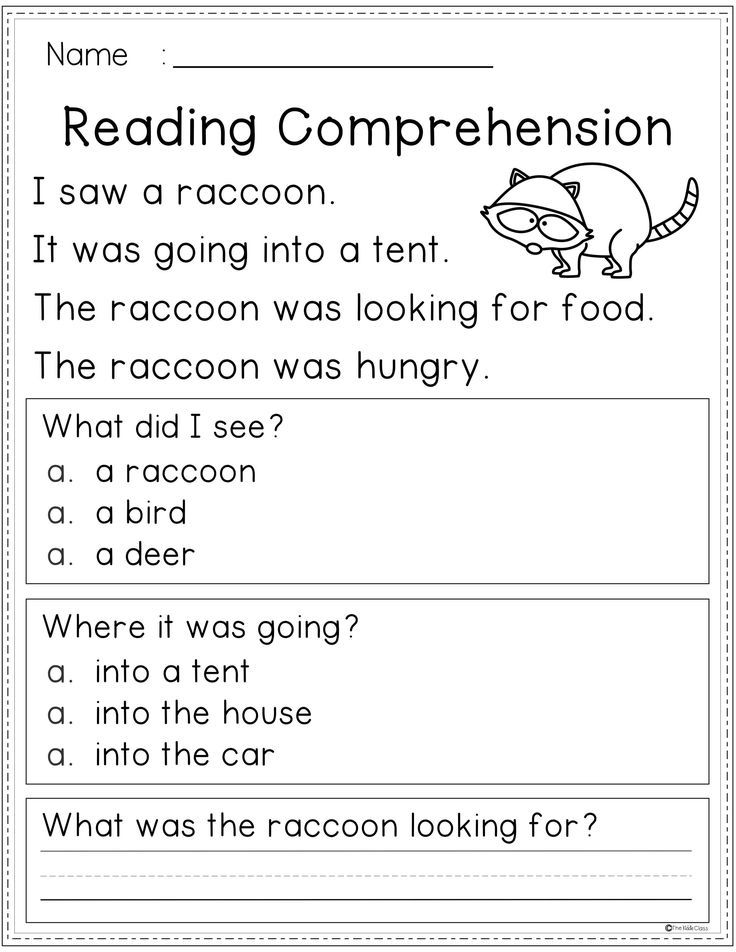 "
" - Choose books and texts that are interesting for your child.
- Let the child read to the pets, they are grateful and accepting listeners. Reading to them, the child is not afraid to make a mistake, he relaxes and overcomes the fear of failure.
- Have a reading competition between peers and siblings.
To improve the speed of reading will help:
- Reading by syllabic tables.
- Multiple reading. Read the same text several times, increasing the pace. From the second time the child will be able to read faster.
- "Tug". An adult leads a finger along the line, setting the pace. The child tries to read at a given pace.
- Tops and roots. The child reads the words, covering the upper or lower half of the letters with a ruler.
- Reading in a book turned upside down.
- Lightning. Alternating reading at a comfortable pace with reading at the highest possible speed for 20 seconds on the command "Lightning!".
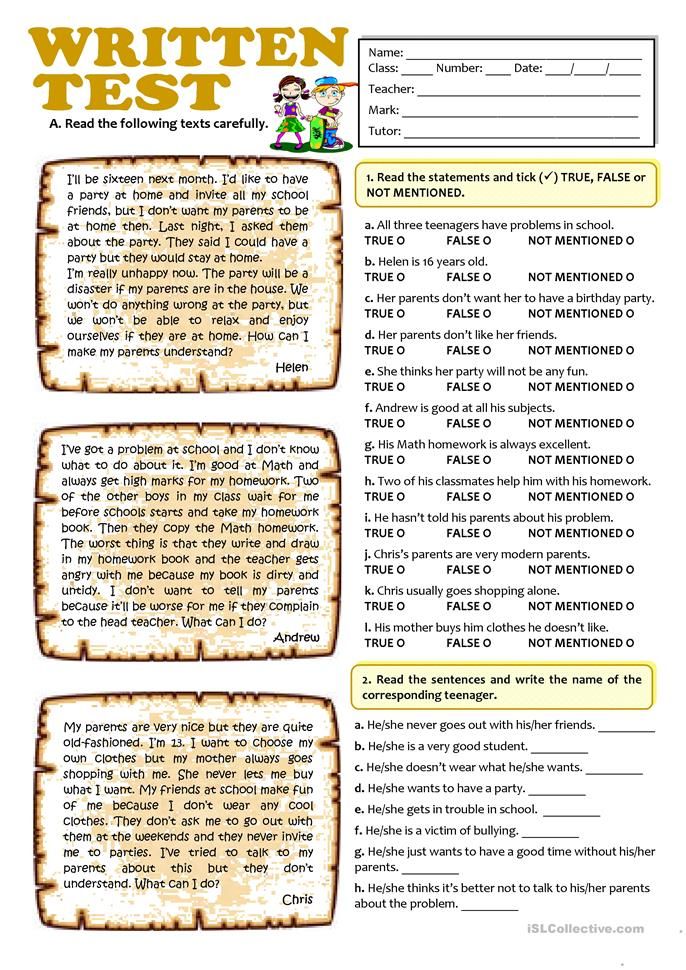
- "Sprint". Reading speed competition between classmates.
- Work on expanding the field of view according to Schulte tables.
- Reading with a window to eliminate "regression" - recurrent eye movements, leading to repeated reading.
For correct reading:
- Work on clear diction, do articulatory gymnastics.
- Read tongue twisters and tongue twisters.
- Invite the child to correct the deformed sentences: "The weather is good on the street."
- "Imaginary word". When reading, the wrong word is pronounced, the child must correct it.
Reading comprehension
- “Wave Reading”. First, the child reads aloud, then retells what he read.
- Drawing up a plan for reading.
- The student reads to himself at a comfortable pace, tells what he understood and felt, what he thought about
- Discuss unfamiliar words and expressions.
- Invite the child to draw a picture of the passage they read.
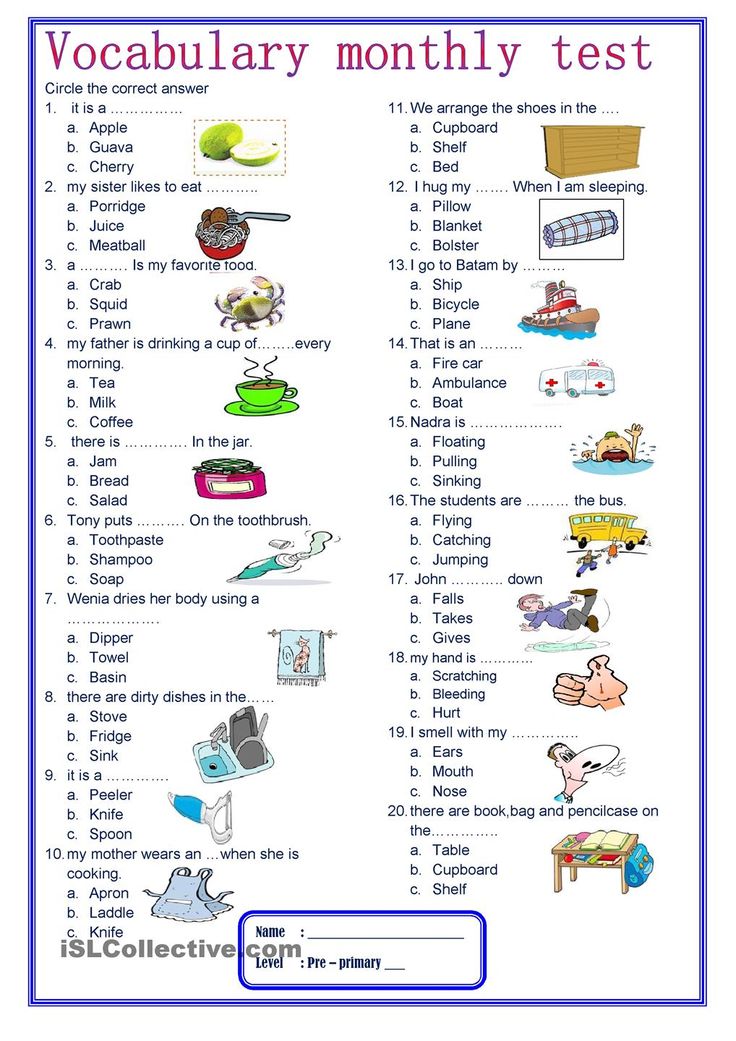
Learn more


